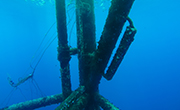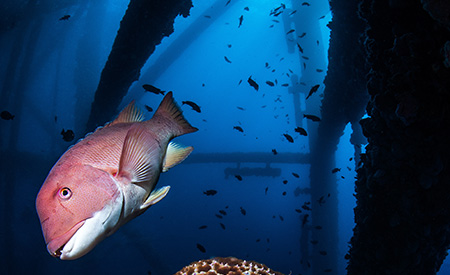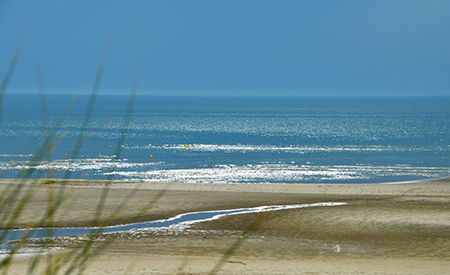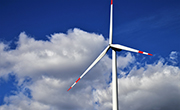Fixed offshore wind
Type of resources
Available actions
Topics
Keywords
Contact for the resource
Provided by
Years
Formats
status
-

The objective of the ANODE project was to quantify the chemical compounds emitted by the galvanic anodes of ORE structures and the risk associated with their dispersion in the marine environment. By combining ecotoxicological expertise and hydrodynamic modelling, the ANODE project has determined that there is no risk associated with most of the elements making up galvanic anodes, namely zinc, iron, copper and cadmium. On the other hand, concerning aluminium, additional experiments are necessary to conclude. The two currently available Predicted No-Effect Concentrations (PNECs) do not seem suitable for this assessment. These thresholds must therefore be refined and include data from in situ measurements in order to be able to estimate the possible risk associated with aluminium releases.
-

Review to identify the state of knowledge on anodes and their environmental impact. Report serving as a basis for further work (deliverables 3 and 4)
-

The objective of the COME3T project were: • To provide elements of expertise, synthesis and recommendations on the identification of environmental priority issues for the ORE through the establishment of a lead neutral experts committee. • To install a French and unique network of experts that can be consulted by all ORE stakeholders.
-

Conclusion and recommendation report resulting from the results of the ANODE project and published by FEM editions
-

This study investigated the effects of a spatial closure during the exploitation phase of an offshore wind farm in the extended Bay of Seine (English Channel, France) using Ecospace, a spatially and temporally explicit module of Ecopath with Ecosim.
-

This document identifies gaps in knowledge and emphasizes the need for long-term monitoring of marine mammals in order to better understand the impacts of wind turbines on them
-
The consequences of climate change for marine organisms are now well-known, and include metabolism and behavior modification, distribution area shifts and changes in the community. In the Bay of Biscay, the potential environmental niches of subtropical non-indigenous species (NIS) are projected to expand as a response to sea temperature rise by the mid-century under the RCP8.5 climate change scenario. In this context, this study aims to project the combined effects of changes in indigenous species distribution and metabolism and NIS arrivals on the functioning of the Bay of Biscay trophic network. To do this, we created six different Ecopath food web models: a “current situation” trophic model (2007–2016) and five “future” trophic models. The latter five models included various NIS biomass combinations to reflect different potential scenarios of NIS arrivals. For each model, eight Ecological Network Analysis (ENA) indices were calculated, describing the properties of the food web resulting from the sum of interactions between organisms. Our results illustrate that rising temperature increases the quantity of energy passing through the system due to increased productivity. A decrease in the biomass of some trophic groups due to the reduction of their potential environmental niches also leads to changes in the structure of the trophic network. The arrival of NIS is projected to change the fate of organic matter within the ecosystem, with higher cycling, relative ascendency, and a chain-like food web. It could also cause new trophic interactions that could lead to competition and thus modify the food-web structure, with lower omnivory and higher detritivory. The combined impacts (increasing temperatures and NIS arrivals) could lower the resilience and resistance of the system.
-

This document presents an analysis of the isotopic ratios of organisms sampled on the site of the future Windfarm.
-

This document briefly presents the methodology used to build the Ecosim and Ecospace models representing the extended Seine Bay ecosystem as well as the main results.
-

The objective of the CARAVELE project was to improve the characterisation of extreme winds by combining atmospheric models with satellite and in-situ observations.
 Catalogue PIGMA
Catalogue PIGMA